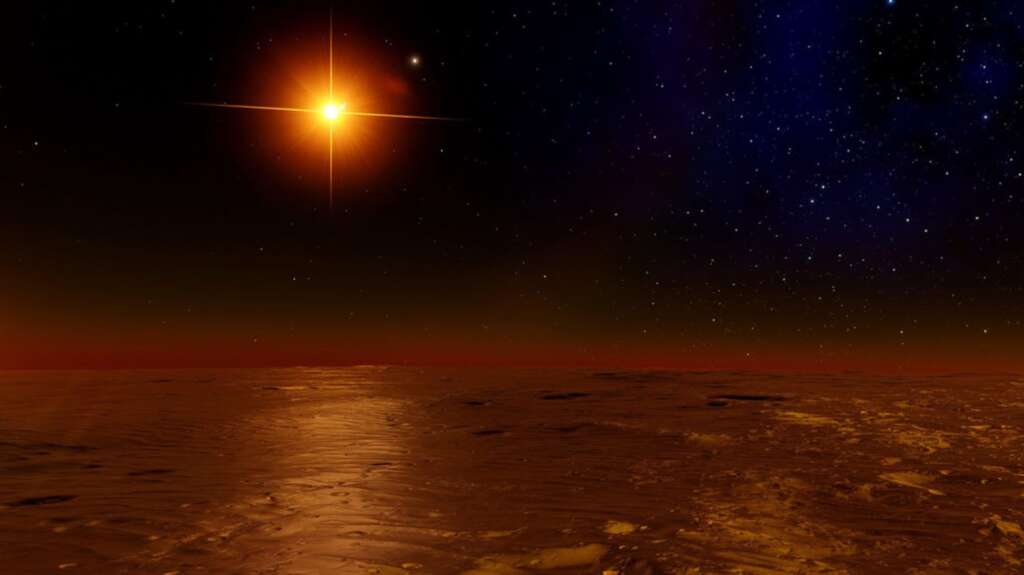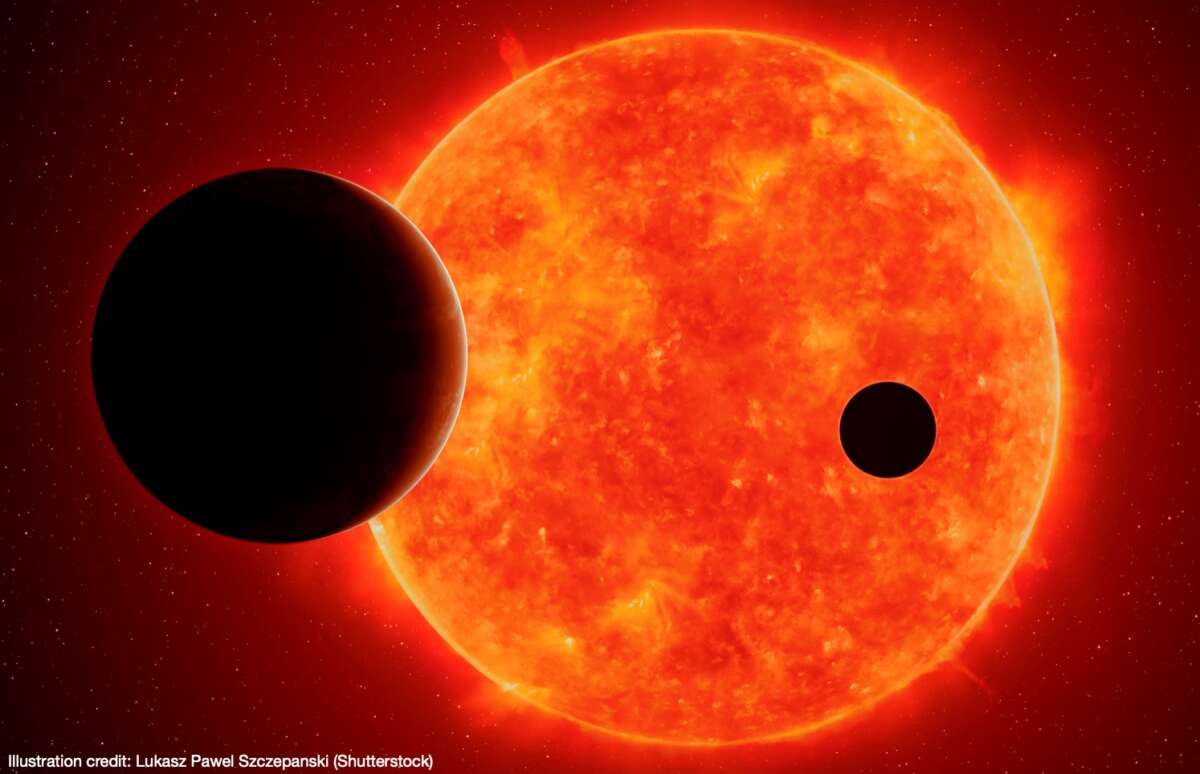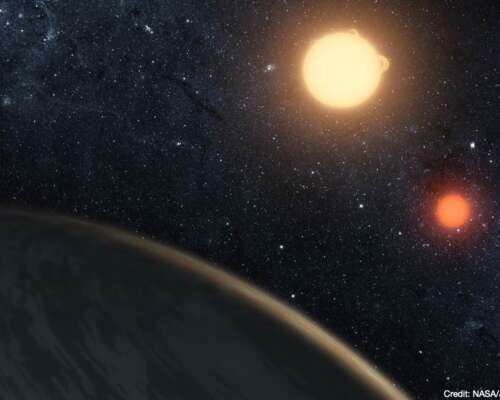One of the many things I find fascinating is speculating on the possibility of life elsewhere in the universe. What life might emerge on a planet circling a white dwarf star, or a red giant, a pulsar? What if the planet was tidally locked? What if it was a waterworld, or an ice planet? The oceans on Ganymede, one of the moons of Jupiter are thought to be sixty miles deep with a thick crust of ice covering them. What life might-or might not-exist at that depth and under those temperatures? At the other extreme, could giant sandworms exist on a desert planet, and what might their food source be? How would they live and how would they die?
Then, there are all sorts of other interesting things to dream about. What flora might exist? What would the rocky surface of a planet resemble? The possibilities are endless.
A personal journey

Since early childhood, I have always been interested in science, particularly cosmology, biology, paleontology, geology and geography. At an early age, I came to admire respect scientists and authors I read or was familiar with, such as the British astronomer Patrick Moore or Charles Messier.
Growing up during the fifties and sixties at a resort in the Catskills, my family was friends with Karl and “Lola” Penzias, whose son Arno would go on to co-share a Nobel prize in physics for his co-discovery of evidence supporting the Big Bang theory while working for Bell. Arno visited the resort briefly each summer, though not as frequently as his parents and family.
Faith vs. Science
Christianity is not so fragile as to be threatened by life elsewhere in the galaxy. If we let it, science can make positive contributions to faith, and faith can make positive contributions to science, and that’s a plea to scientists as well as to clergymen. I cannot personally understand how scientists can explore the complexity and diversity of life on our planet and the movements of heavenly bodies and not conclude with the Psalmist that there was and is some grand design behind it:
“When I consider your heavens,
the work of your fingers,
the moon and the stars,
which you have set in place,
what is mankind that you are mindful of them,
human beings that you care for them?
– Psalm 8: 3,4
Life forms on this planet seem related to each other, and not just as prey to predator. Parasites such as Echinococcosis, as just one example, occasionally require two completely different hosts in which to mature and proliferate. What if there were wolves, but no sheep? Or sheep but no wolves? Another pathogen very familiar to us today (SARS-CoV-II) required an intermediate host to jump from bats to humans (assuming it did not escape from a Chinese lab.)
On the other hand, some religious leaders hold science in contempt, as if science was hostile to, or mutually exclusive with, faith. There is room for a tolerant, healthy debate, which should be good for both disciplines. And, while I agree with much that science supports, I don’t agree with all of their conclusions. Richard Dawkins or Bill Nye would likely grow impatient with some of my views on evolution. But if Stephen Jay Gould could believe in something as astounding as punctuated equilibrium, then why can’t I believe in something equally astounding as intelligent design (which may be closely related?) Gould understood that fourteen billion years is not enough time for our sun to mature, the planets to coalesce and cool down, and life on earth to have evolved. Even now, scientists are looking for plausible and convincing evidence that creation is much older. My existential worldview calls for a young earth, but certainly not as young as 6,000 or 10,000 years as some wrongly believe Scripture teaches. Having settled on that conclusion, I frankly tend to prefer hypotheses and data that supports this view to the exclusion of hypotheses and data that do not. But scientists can be guilty of the same “cherry-picking” though they would deny massaging the data. They know what the existing paradigm dictates and react the same as I might, as Thomas Kuhn described it in The Structure of Scientific Revolution. And, if a scientist disagrees with the prevailing paradigm, it is at his or her peril (see here for an example of an article that was likely peer-reviewed before being accepted for publication in a prestigious scientific publication.)
Parenthetically. . .
At the moment, I envision a “science column” or a series of in-depth essays on the prospects of extraterrestrial life, and if there is advanced, intelligent life discovered, how this might fit into the Christian worldview. And what Christianity might mean to these otherworldly species. Did Jesus die for humans only, or all of creation? Would sentient, intelligent life in other parts of the galaxy be moral, fallen, good or evil?
In the area of science and technology, I have also been researching robots and AI, including deep learning and black box technology. As robots and algorithms become more “human,” (I’m reminded how startling–but strangely comforting–it is when Siri occasionally addresses me by my first name), do we have responsibilities to treat these machines “humanely?” Some people today have artificial intelligence “lovers.” We think of robots as recent innovations, but robots are nothing new. Greek mythology, for example, is filled with robots. Pandora was not a human girl as most people believe, but an android created to punish mankind. The eagle that tormented Prometheus for giving mortals fire was a robot, and such a powerful one that Jason the Argonaut claimed when it flew over his ship, the air beaten by the eagle’s wings filled the sails of his ship. An outstanding book on this subject by Adrienne Mayor and which I refer to often is available here. So, I have quite a few ambitions and only so much time. I just do the best I can, and I hope that God blesses what I write and leads those who need to read this message to my website.
Why Wolf 359?

There may be many planets in our universe capable of sustaining some sort of life, so why did I pick an unhospitable star such as Wolf 359? First of all, the problems posed by a red dwarf appear to be common throughout our galaxy since as many as 75% of all stars in the Milky Way are estimated to be red dwarfs. Says Georgia State astronomy professor Todd Henry: “Within 33 light years, which is 10 parsecs, there are 240 known M dwarfs. There are definitely more. Stars with a spectral type of G, like our sun, there are only 21. So. you’ve already got a factor of about 12 more of the little red guys than we do of the yellow ones.” (Astrobiology Magazine). Then, too, unlike Epsilon Eridani, Tau Ceti, Ross 614A or Alpha Centauri B, Wolf 359 has been featured in television series such as The Outer Limits and Star Trek: The Next Generation and thus has some sort of familiar (if ominous) appeal among the sci-fi crowd.
Red dwarfs were not as respected as other stars because early on, astronomers believed that nothing could live (or survive) living on a planet circling a red dwarf. That has changed more recently:
The flares coming from Wolf 359, of course, can be problematic. According to Solstation:
“Many dim, red (M) dwarf stars exhibit unusually violent flare activity for their size and brightness. These flare stars are actually common because red dwarfs make up more than half of all stars in our galaxy. Although flares do occur on our Sun every so often, the amount of energy released in a solar flare is small compared to the total amount of energy Sol produces. However, a flare the size of a solar flare occurring on a red dwarf star (such as Wolf 359) that is more than ten thousand times dimmer than our Sun would emit about as much or more light as the red dwarf itself, doubling its brightness or more.
“Flare stars erupt sporadically, with successive flares spaced anywhere from an hour to a few days apart. A flare only takes a a few minutes to reach peak brightness, and more than one flare can occur at a time. Moreover, in addition to bursts of light and radio waves, flares on dim red dwarfs may emit up to 10,000 times as many X-rays as a comparably-sized solar flare on our own Sun, and so flares would be lethal to Earth-type life on planets near the flare star. Hence, Earth-type life around flare stars may be unlikely because their planets must be located very close to dim red dwarfs to be warmed sufficiently by star light to have liquid water (about 0.0042 AU for Wolf 359 with an orbital period of around 8 hours), which makes flares even more dangerous around such stars. In any case, the light emitted by red dwarfs may be too red in color for Earth-type plant life to perform photosynthesis efficiently.“
All things considered
Barely twice the size of our planet Jupiter, Wolf 359 only produces 1/1000th the light of our sun, and much of that is in the infrared range, making the “useful” light about eight to ten times the reflected light of a full moon on earth. The lack of light is also representative of a lack of heat from these stars, so life as we can conceive it, must only exist on a planet that is very close to the dwarf star (closer than Mercury is to our sun in many cases.)
This close distance to a larger body makes a planet vulnerable to a phenomenon called “tidal locking,” where the planet’s rotation equals its revolution, like it is with our moon. Before the age of lunar satellites, no person had ever seen the “dark side” of our tidally-locked moon. What that means for potential life is that one hemisphere on a Wolf 359 planet would be in constant darkness and the other half in more or less constant light (even if dim light). There would not be enough useful light in the right spectrum to support photosynthesis, so most plants that grow on Earth would not survive on a Wolfen planet, and those that do would develop very dark or scarlet-colored foliage. When we speculate about what alien life might look like, one of the most important considerations may well be that engineering rule which is taught in college; which is, form follows function. Plants on Earth do not have legs (though they do have vines and runners) because plants in general are rooted. Some plants have particularly sensitive light demands (such as sunflowers and morning glories which have flowers that follow the sun across the sky, much as some twentieth century radar dishes tracked their targets.) On Wolf 359 where light is so scarce and photosynthesis so difficult, plants might need some way to move about in order to find an idea “place in the sun,” though the sun would remain stationary in the planet’s sky.
Light is just one variable. Magnetism is another. Another would be seismology, while another the tilt of a planet’s axis. Still other variables include the presence (or absence) of water, climate and cloud cover, and the need for an atmosphere which also speaks to another variable (the planet’s mass.) However, that atmosphere need not contain oxygen, a gas that is poisonous to many anaerobic life forms on our planet. I remember when the Huygens probe entered the atmosphere of Titan, Saturn’s largest moon in 2005. A microphone captured the first sounds of an alien atmosphere (Listen here.)
Then there is temperature. On the side of the planet facing Wolf, there is an unbearably high temperature in spite of the cool star and the close proximity of the planet to Wolf. There is also the frigid cold (at least on the dark side of the planet.) Animals on earth have learned to hibernate or enter some sort of torpor, but on earth, animals cannot breed while asleep, so any prolonged state of hibernation on some alien planet would doubtlessly have an effect on the proliferation of the species unless it is radically different in some way than life on Earth. We just don’t know enough about planets b and c to speculate.
It may be possible in tidally-locked planets to have a temperature “sweet spot” along the planet’s terminator (i.e. the “zone where light meets darkness.) If one part of the planet is always plus 1,000 degrees F and another part minus 1,000 degrees F, then all things being equal, there may be a transitional zone near the terminator where temperatures are fairly “balmy” (though other variables may be punishing.) But life can be found in unusual places. Take the deep ocean hydrothermal vents discovered in 1979, for example. Seawater within the vents may reach a temperature of 700 degrees Fahrenheit, yet the pressure of the ocean keeps the water from boiling. These nutrient rich vents are found on the ocean floor at depths of 16,000 feet or more where the water temperature is close to 0 degrees F. However, these inhospitable conditions are home to many unique plants and animals who depend on these black (and white) “smokers” for their sustenance. This may be true for water worlds circulating distant star systems. Perhaps one of the planets around Wolf is a water world, but then water is not the only solution possible.
In fact, Wolf 359 is thought by some to have two exoplanets in its system, one much closer to the star than the other and they cannot be directly observed. The star, itself is frustratingly dim as well (see below.) But here is what we know (or think we know) about the two planets (Wolf 359b and Wolf 359c) in the Wolf 359 star system (we can tell by the letter at the end of a planet’s name when it was discovered vis-à-vis the other planets in the system. The star is usually “a” unless it is a double star. Then, the first planet noted is “b,” the second planet discovered in that system is “c” and so on):
Wolf 359b
Wolf 359b is the outer of the two known planets. It was discovered in 2019. It’s revolution around the star is 2938 ±436 days or approximately eight of our years. In comparison, it takes Jupiter twelve years to revolve around our sun. The mass of Wolf 359b is approximately forty-four times that of Earth, so there is a good amount of gravity present. However, it is doubtful that this planet is terrestrial, but rather more like a gas giant as Saturn and Neptune are, unless it is an ice giant. This does not exclude the possibilty of life

however. It just modifies the equation (though it may indeed rule out the possibility of life as we define it.). Wolf 359b has an inclination of 1.8 which practically insignificantly compares with the 23.5 degree inclination of our planet. It’s the inclination of a planet in part that provides the opportunity for seasons. Wolf 359b is a little smaller than Neptune. It likely has many moons yet to be discovered.
Wolf 359c
Wolf 359c has a mass four times that of earth, so you would be breathing hard doing anything (assuming that planet even had an atmosphere and if so, if it were breathable for humans.) The gravitational attraction, incidentially, has nothing to do with the size of the planet, but what the planet is made of. Here’s an interesting video that shows how our life would change at twice the gravity that we have now. And Wolf 359c has twice that, even. We see all sorts of science fiction movies, but how many have you seen where gravity was the problem? Usually it is temperature, or light, or radiation, or breathable air or scary life-forms.
Wolf 359c has a rocky, perhaps porous surface and it receives three times the radiation that the earth does.
Wolf 359c circles its star every three days, so it moves very rapidly (Mercury take eighty-eight days to orbit our sun) and 359c has no “seasons” to speak of (not the least because it has almost no inclination to its axis.)
One reason Wolf 359c might be a better candidate to support life is it’s proximity to the star. With the available light and heat produced by Wolf 359, a planet must be closer to the Wolf star than Mercury is to ours. The temperature of the star and distance of a planet from it are just two variables used to classify whether a planet is in the “habitable zone” or not. Some scientists think there may be some water on Wolf 359c in that case. Since the planet is almost certainly tidally locked, it seems like the far side of the planet which is in perpetual darkness might be the hemisphere that has water in the form of ice or frost. Or, depending on what we learn about the atmosphere of Wolf 359c, it may not be a icy cold as you would imagine because as modelling seems to indicate, winds on a planet would tend to redistribute the heat planet-wise.
And speaking of flares . . .
“. . . life might not be a picnic around a red dwarf. Several times per day flares shoot off the star, causing the UV radiation to jump by 100 to 10,000 times normal. For several minutes, the star appears blue instead of red. This increased radiation could sterilize the surface of a nearby planet.“
The radiation emitted by Wolf 359 is likely less than when it was much younger, though. Yet, an hundred times normal is insane!
Earth is spared the effects of such violent flares because of our distance from the sun, our atmosphere and particularly our electromagnetic field. Each of these variable are different for Wolf359c, however. For example, our planet Mercury is tidally locked as Wolf 359c likely is, and Mercury has no electromagnetic field.
Wolf 359 is named after German Astronomer Max Wolf. One of the closest stars to earth, it is still too faint to be seen without a telescope. Wolf 359 has a visual magnitude of 13.50, so you would definitely need a serious (i.e., expensive) telescope to locate it. It’s found in the constellation Leo. Wolf 359 is classified as a flare star because it can increase dramatically in brightness for several minutes at a time. Yet, it’s cool enough for chemical compounds to form and survive in its photosphere.
Wolf 359 is 7.8 light years from Earth. Travelling at the speed of light, it would take almost eight years to arrive.



